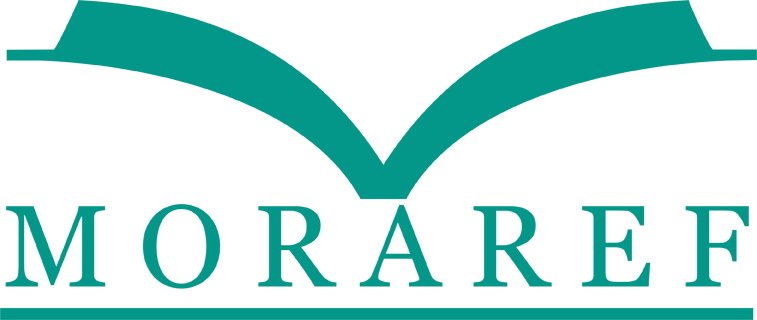The Effect Of Different Curing Time on Giomer’s Fluoride Release
Abstract
Dental caries is one of the chronic disease of the oral cavity with a prevalence of 45,3% in indonesia. Fluoride is one of the substance that could help in preventing carries and secondary carries. Fluoride can also be found in restorative materials used in dentistry that could release fluoride ions inside the oral cavity. The aim of this study is to determine the differences of different curing time on giomer’s fluoride release.The method used in this study is experimental laboratory design using 27 giomer samples that are divided into 3 groups based on the duration of irradiation of 20 seconds, 40 seconds, and 60 seconds. Fluoride-release were observed by immersing the polymerized restorative material into artificial saliva and then tested using UV-Vis Spectrophotometer with a wavelength of 570 nm. One way ANOVA test showed differences in fluoride levels in the 3 treatment groups with p < 0.05. There was a significant difference in fluoride levels between polymerized giomer restorative materials with curing time of 20, 40, and 60 seconds.
Keywords
Full Text:
PDFReferences
Al-Eesa, N., Wong, F., Johal, A., and Hill, R. 2017. Fluoride containing bioactive glass composite for orthodontic adhesives – ion release properties. Dental Material. 33(11): 1324-1329.
Annusavice, K., Chiayi, S., and Rawls, H. 2021. Phillips’ Science of Dental Materials. 13th ed. Missouri : Saunders Elsevier.
Askar, H., Krois, Joachim., Göstemeyer, G., Bottenberg, P., Zero, D., Banerjee, A., and Schwendicke, F. 2020. Secondary caries: what is it, and how it can be controlled, detected, and managed?. Clinical Oral Investigations. 24(1): 1869–1876.
Colceriu-Burtea, L., Prejmerean, C., Prodan, D., Baldea, I., Vlassa, M., et al. 2019. New Pre-reacted Glass Containing Dental Composites (giomers) with Improved Fluoride Release and Biocompatibility. Materials (Basel). 12(23): 4021.
Dionysopoulos, D. 2014. The effect of fluoride-releasing restorative materials on inhibition of secondary caries formation. Fluoride. 47(3): 258-265.
Ferracane, J. 2017. Models of caries formation around dental composite restorations. Journal of Dental Research. 96(4): 364–371.
Francois, P., Fouquet, V., Attal, J., and Dursun, E. 2020. Commercially Available Fluoride-Releasing Restorative Materials: A Review and a Proposal for Classification. Materials (Basel). 13(10): 2313.
Harpreet, S., Rashmi, S., Pai, S., and Kini, S. 2020. Comparative Evaluation of Fluoride Release From Two Different Glass Ionomer Cement and a Novel Alkasite Restorative Material - An in Vitro Study. Pesquisa Brasileira em Odontopediatria e Clínica Integrada. 20(6): 2-3
Ibrahim, I., Luthfia, P., Akbar, M.R., and Karina, C. 2021. Pengaruh Intensitas Sinar LED Terhadap Perubahan Warna Resin Komposit Flowable. Jurnal Ilmiah dan Teknologi Kedokteran Gigi. 17 (1): 9-15
Jung, J., and Park, S. 2020. Comparison of Polymerization Shrinkage, Physical Properties, and Marginal Adaptation of Flowable and Restorative Bulk-fill Resin-based Composites. Operative Dentistry. 42(4): 375-386.
Kaya, S., Bakkal, M., Durmus, A., Durmus, Z. 2018. Structural and mechanical properties of a giomer-based bulk fill restorative in different curing conditions. Journal of Applied Oral Science. 26(26): e20160662.
Kementerian Kesehatan RI. 2018. Hasil Riset Kesehatan Dasar (Riskesdas) 2018. Jakarta: Badan Penelitian dan Pengembangan Kesehatan Kementerian RI. 2018: 204-216.
Najib, M., Aoyna, C., and Nuzlia. 2020. Uji Kadar Fluorida Pada Air Minum Dalam Kemasan (AMDK) dan Air Sumur Secara Spektrofotometeri Uv-Vis. Amina. 1(2): 84-90
Olmos-Olmos, G., Teutle-Coyotecatl, B., Román-Mendez, C., Carrasco-Gutiérrez, R., González-Torres, M., et l. 2021. The influence of light-curing time on fluoride release, surface topography, and bacterial adhesion in resin-modified glass ionomer cements: AFM and SEM in vitro study. Microscopy Research and Technique. 84(8): 1628-1637.
Pitts, N., Zero, D., Marsh, P., Ekstrand, K., Weintraub, J., et al. 2017. Dental Caries. Nature Reviews Disease Primers. 17030 (2017).
Ritter, A., Eidson, R., and Donovan, T. 2013. Dental caries: etiology, clinical characteristics, risk assessment, and management. Heymann HO, Swift EJ, Ritter AR, Art and science of operative dentistry 6th ed. Mosby Elsevier. St. Louis. 6: 40-44
Rusnac, M., Gasparik, C., Irimie, A., Grecu, A., Mesaros, A., and Dudea, D. 2019. Giomers in dentistry – at the boundary between dental composites and glass-ionemers. Medicine and Pharmacy Reports, 92(2): 123-128.
Sakaguchi, R., Ferracane, J., and Powers, J. 2019. Craig’s Restorative Dental Materials. 14th ed. Mosby Elsevier. Philadelphia. 14: 2-21.
Shahzad, H., Awais, F., Shirazi, U., Majeed, H., Rafique, A., et al. 2020. The impact of dental caries on oral health related quality of life amongst adult population in Lahore, Pakistan. Makara Journal of Health Research. 24(1): 1-7.
Shaymaa, N., Moharam, M., and Mohamed, Z. 2015. Effect of resin thickness, and curing time on the micro-hardness of bulk-fill resin composites. Journal of Clinical and Experimental Dentistry. 7(5): e600-4.
Şişmanoğlu S., 2019: Fluoride Release of Giomer and Resin Based Fissure Sealants. Odovtos International Journal of Dental Science. 21-2 (May-August): 45-52.
Souza, J., Souza, S., Noronha, M., Ferreira, E., and Martins, A. 2017. Impact of untreated dental caries on the daily activities of children: Impact of untreated dental caries. Journal of Public Health Dentistry. 78(suppl 1).
Winanto, M., Dwiandhono, I., Logamarta, S., Satrio, R., and Kurniawan, A. 2022. The effect of giomer’s preheating on fluoride release. Dental Journal. 55(4): 226-230.
DOI: https://doi.org/10.31983/jkg.v10i1.9539
Article Metrics
Refbacks
- There are currently no refbacks.
| View My Stats |











.png)


.png)
.png)









